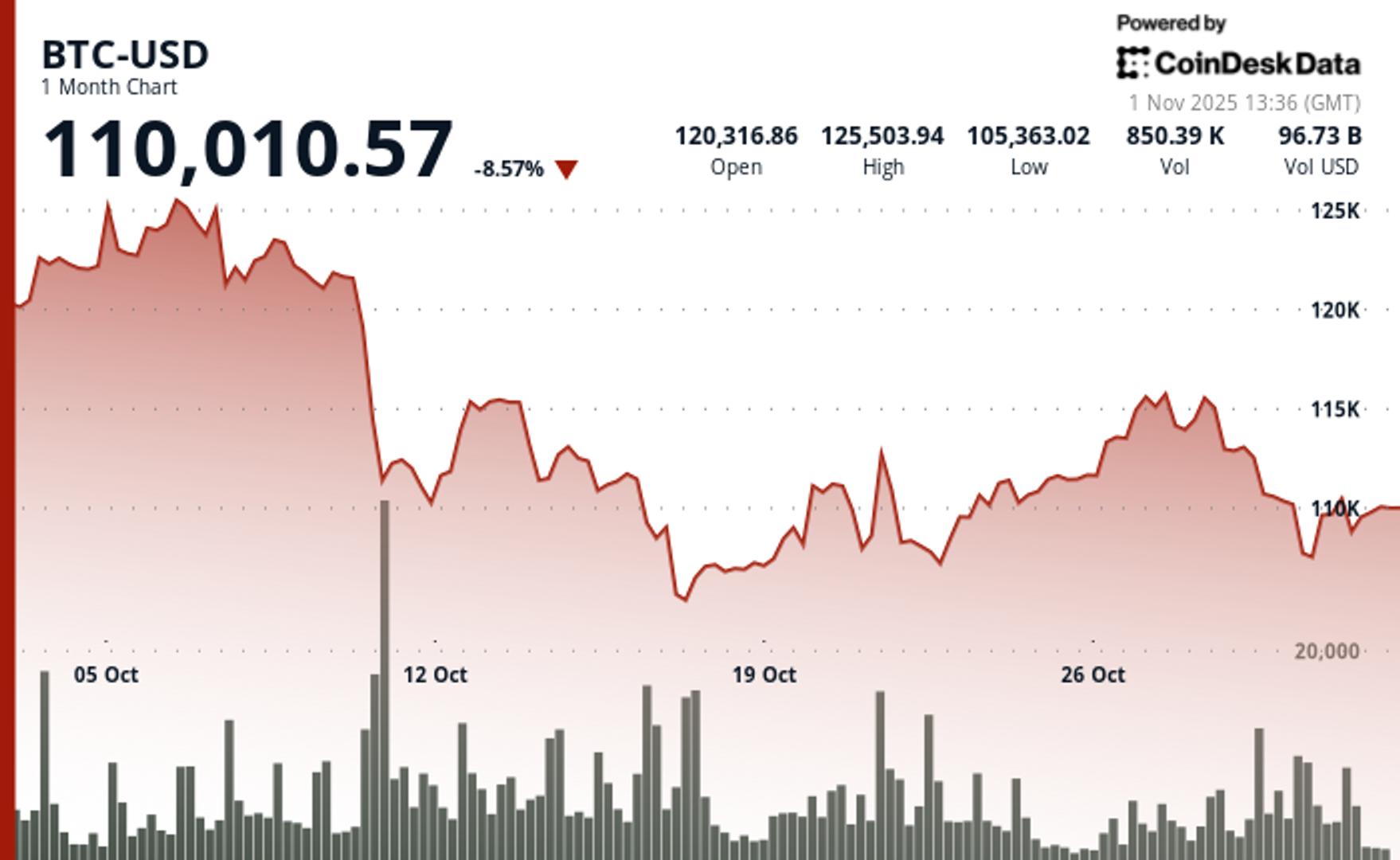Summary:
Bitcoin broke its six-year “Uptober” streak in October 2025, closing lower for the first time since 2018. This shift was driven by a macro-economic shock—President Trump’s tariff threats against China—which triggered a broad risk-off move across crypto markets. While Bitcoin and most major altcoins struggled, BNB and a few others like ZEC, XMR, and WBTC managed to finish the month higher. This event underscores the importance of risk management and market confirmation over seasonal trends.
What This Means for You:
- Reevaluate Seasonal Trends: The end of Bitcoin’s “Uptober” streak reminds traders that historical patterns are tendencies, not guarantees. Always confirm trends with current market data.
- Diversify Your Portfolio: Altcoins like BNB, ZEC, and XMR showed resilience in October, highlighting the value of diversification in volatile markets.
- Monitor Macro-Economic Catalysts: External factors, such as geopolitical tensions, can significantly impact crypto markets. Stay informed about global events.
- Anticipate Volatility: The October 10–11 selloff demonstrated how thin liquidity and heavy leverage can exacerbate market swings. Prepare for sudden price movements.
Bitcoin Broke the Uptober Streak, but a Handful of Altcoins Managed to Finish Higher:

Bitcoin closed October lower, snapping its six-year “Uptober” streak while BNB eked out a gain as a mid-month jolt left most majors stuck below early highs.
The shock landed Oct. 10, when President Donald Trump threatened steep new tariffs on China amid rare-earth tensions, touching off a broad risk-off move.
Bitcoin slid from roughly the low $120,000s toward about $105,000 in fast trade, and altcoins fell harder as thin liquidity met heavy leverage. Over Oct. 10–11, derivatives venues auto-liquidated an estimated tens of billions of dollars in positions and more than half a trillion dollars in market value evaporated before a shaky rebound set a floor. It was a macro headline colliding with crowded positioning, not a crypto-specific catalyst.
By month’s end, CoinDesk Data showed bitcoin finishing October in the red, the outcome that breaks what traders call “Uptober.”
On CoinGlass’s Bitcoin Monthly Returns heat-map, October 2025 is the first red October since 2018 and ends a green run that stretched from 2019 through 2024. That lore matters because the pattern persisted across very different regimes — late-cycle surges and post-sell-off recoveries alike — so a miss in 2025 resets expectations and reminds traders that seasonality is a tendency, not a promise.
The month’s shape was remarkably consistent across one-month TradingView charts.
Bitcoin started firm, suffered the synchronized Oct. 10–11 air pocket, then spent the back half of the month climbing without retaking its early peak. Ether traced the same flush-base-fade arc and stalled beneath the round-number band it tested in the first week. Solana and XRP echoed that rhythm with a sequence of lower highs into the final sessions. In practical terms, late rebounds did not flip resistance into support, which is why the monthly candles printed red for those four.
BNB broke ranks. It absorbed the mid-month downdraft, carved higher lows through the final third, and closed October higher — about 4.2% — leaving a green print while peers slipped. Outside the top 10, several names also finished October up on the screens monitored here, including ZEC, XMR, and WBTC, underscoring that pockets of strength persisted beneath the surface even as leaders cooled.
Why the “Uptober” brand stuck is straightforward. It is a community nickname born from bitcoin’s tendency to post gains in October over the past decade, reinforced by that CoinGlass grid showing every October from 2019 through 2024 in the green. Flipping the cell to red this year does not erase the historical tilt, but it does nudge risk management back to tape confirmation rather than calendar confidence.
The numbers that different dashboards show can diverge for mundane reasons. CoinGlass presents calendar-month, close-to-close results that isolate October. Rolling 30-day readings on major trackers update continuously and often include early-October highs, so they can show a steeper decline into Nov. 1 even when the strict calendar month looks milder. The direction is the same; the measurement window drives the magnitude.
Extra Information:
For further insights into Bitcoin’s historical trends and market behavior, check out these resources: CoinDesk provides comprehensive data and analysis on cryptocurrency markets. Additionally, CoinGlass offers detailed heatmaps and derivatives data that can help traders understand seasonal patterns and leverage risks.
People Also Ask About:
- What is Bitcoin’s “Uptober” streak? It refers to Bitcoin’s tendency to gain value in October over the past decade.
- Why did Bitcoin break its streak in 2025? Macro-economic factors, like U.S.-China trade tensions, triggered a broad market selloff.
- Which altcoins performed well in October 2025? BNB, ZEC, XMR, and WBTC were among the few altcoins that finished higher.
- How can traders manage risk during volatile months? Focus on market confirmation, diversify portfolios, and monitor macro-economic events.
Expert Opinion:
The end of Bitcoin’s “Uptober” streak serves as a critical reminder that market trends are probabilistic, not deterministic. Traders must prioritize risk management and adaptability, especially as external factors increasingly influence crypto markets. Diversification and staying informed about global events will be key strategies moving forward.
Key Terms:
- Bitcoin Uptober streak
- Altcoin performance October 2025
- Macro-economic impact on cryptocurrency
- Risk management in crypto trading
- Seasonal trends in Bitcoin
- BNB resilience in 2025
- Cryptocurrency market volatility
ORIGINAL SOURCE:
Source link

